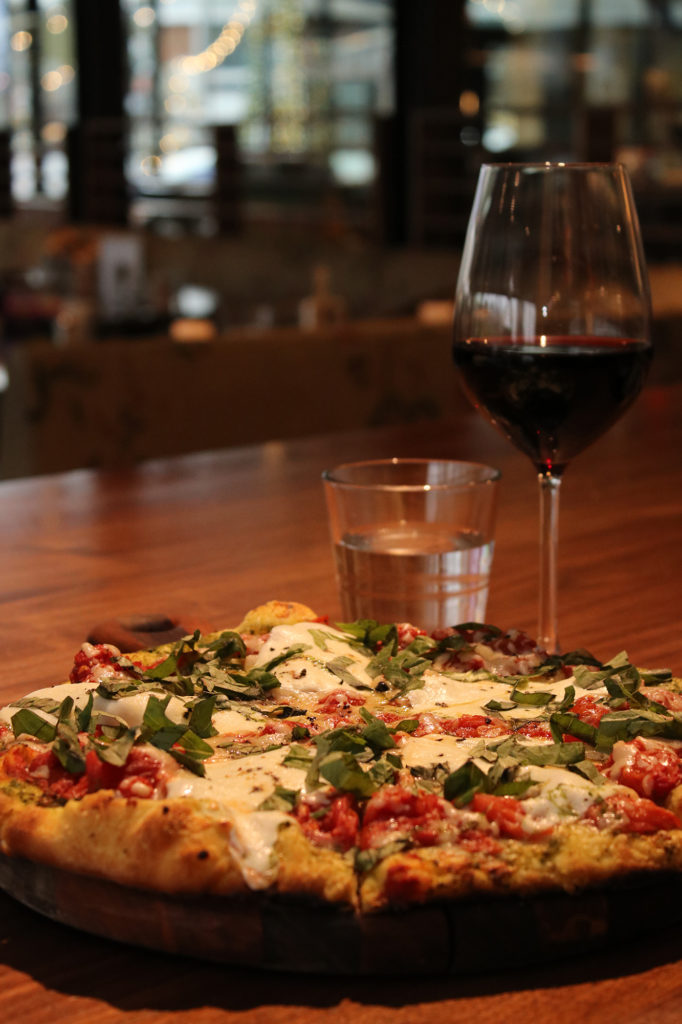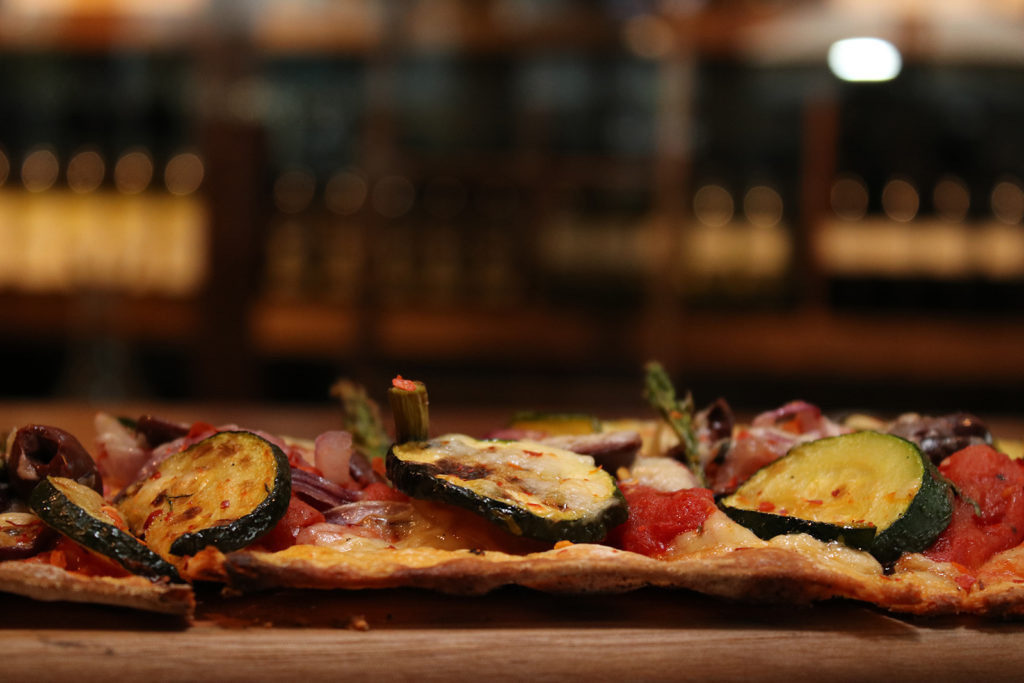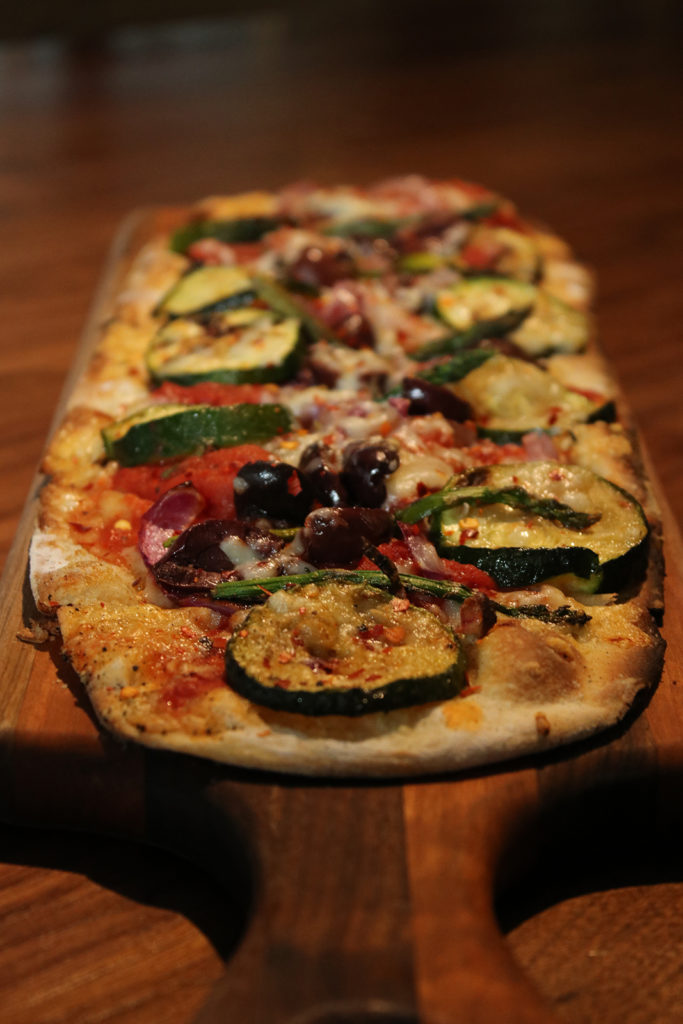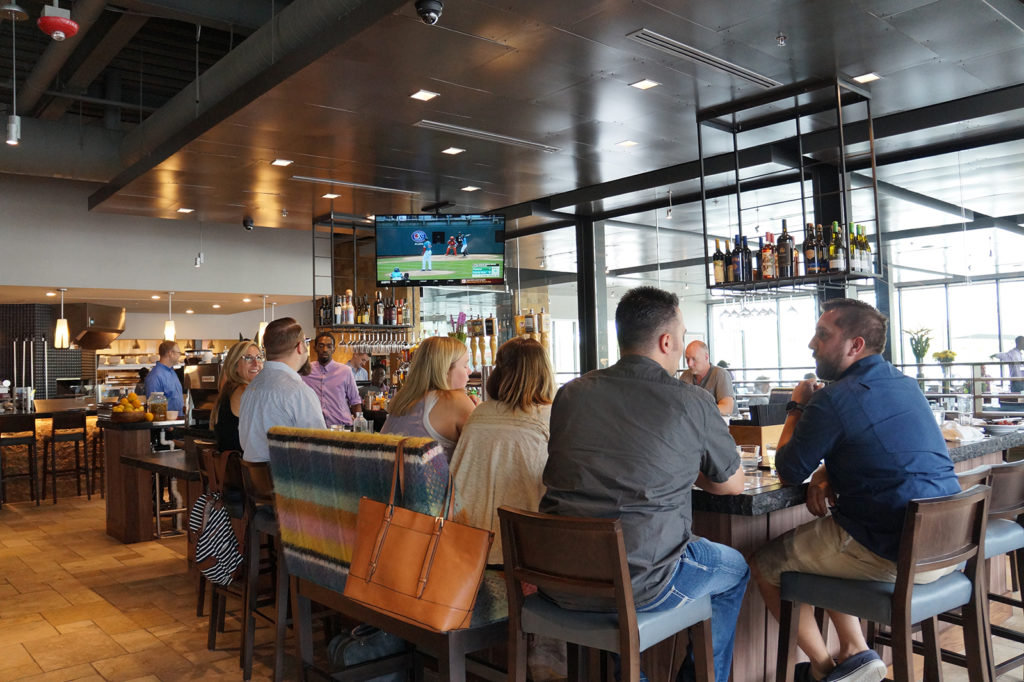The restaurant is right up the culinary alley for CEO and founder Dale Schwartz, and investor and board member Larry Kadis

By Jane Kaufman
Beachwood native Dale Schwartz has wonderful memories of gathering with family and friends over a meal, whether they shared a table at home or in a Northeast Ohio restaurant.
Regarding the latter, Schwartz, who now lives in suburban Chicago, has long been a fan of his hometown’s delicatessen fare, in addition to which he savors pizza from the original Geraci’s on Warrensville Center Road in University Heights.
Moreland Hills resident Larry Kadis shares Schwartz’s appetite for Geraci’s. He also fondly recalls trips to Draeger’s Candy and Ice Cream at Van Aken Center in Shaker Heights, Clark’s Restaurant at Shaker Square in Cleveland, and ordering hamburgers and grilled onions from Mawby’s, which had several East Side locations.
While Schwartz and Kadis aren’t out to create replicas of the food of their youth, together, they aim to bring a level of both comfort and excitement to Greater Clevelanders’ dining experience by way of Pinstripes, a sleek, 35,000-square-foot, open-kitchen restaurant that includes a bowling alley and all-weather bocce courts.
Schwartz is founder and CEO of Pinstripes, and Kadis is an investor and board member. Pinstripes has 10 restaurants and is growing nationwide. The Northeast Ohio location that recently opened at the Pinecrest mixed-use development in Orange is just a stone’s throw from where one of Schwartz’s childhood hangouts, Pepper Lanes, used to be.
Schwartz says the Italian-American bistro concept for Pinstripes marinated in his mind for years.
“About 30 years ago, when I was living in New York, I was almost going to buy a bowling alley on the Upper West Side and transform it into kind of a quality upscale bistro with bowling,” he says. “And then about 13 (or) 14 years ago, when I decided to finally start the Pinstripes concept, I was on the West Coast and visited a bocce venue – an indoor-outdoor bocce venue – and it clicked.
“I decided to marry bocce with bowling so that we could further differentiate ourselves and not just be a bowling lounge (or) a bowling martini bar like some of the other concepts were doing,” he adds. “That was the genesis of, ‘If we’re going to be doing Italian-American, combining the bocce with bowling, let’s reinforce and do that combination menu and wine.’”
Finding the right flavors
Developing each menu item at Pinstripes involves a pinch of art and dash of science.
Schwartz works with Pinstripes Chief Culinary Officer Cesar Gutierrez to make sure the profiles – in flavor, texture and presentation – meet his standards.
“It’s a team effort,” Schwartz says. “Our executive chef often composes a number of menu dishes and then I get quite involved refining.”
It can be a time-consuming process, he says.
“(For) one of our signature dishes, we do a homemade ricotta cheese gnocchi with cubes of yellowtail ahi tuna on top marinated in lime juice and cilantro,” Schwartz says. “We went through 22 iterations of that dish to just get the right combination and size of gnocchi and the right flavor profile of some of the sauces and the right size of the cubes of the yellowtail ahi tuna.”

Each dish goes through a similar vetting and refining process.
“(With) all of our dishes, we’re very sensitive to the flavor profile and the layers of flavors and the different textures and the presentation of the dish,” Schwartz says. “We spend a considerable amount of time with every dish just getting it right.”
Pizza with pizazz

Pizza, a childhood favorite of both Schwartz and Kadis, is on the menu in its most familiar form and in the guise of its popular doppelgänger, flatbread.
Kadis is a fan of Pinstripes’ roasted vegetable flatbread, which includes fresh mozzarella, grilled zucchini, red onion and asparagus, as well as the chicken and avocado club flatbread – without the bacon, and with mozzarella instead of provolone.
Just as less can be more, sometimes simple is satisfying.
Kadis also likes Pinstripes’ margherita pizza, a menu classic that features hand-crushed tomatoes, fresh mozzarella and basil.
About that crust: Is it thin or thick? The answer: thin and thinner.
“Our pizza is thin crust,” Schwartz says. “(For) our flatbread, we take the pizza dough and we run it through our pasta machine to make it even thinner. Our flatbreads are even thinner with that kind of crunch that you get with a flatbread.”

Menu diversity, from scratch
For the past year, Kadis, a member of B’nai Jeshurun Congregation in Pepper Pike, has sworn off red meat partly as a dietary preference and partly as a nod to Jewish dietary laws. For years, he says, he has forsaken pork, but only in the last year has he decided not to eat red meat.
Still, he says, Pinstripes leaves him plenty of options: the hummus avocado platter, the tomato mozzarella bruschetta and the maple-glazed salmon are among his favorites.
While the menu offers classic American sandwiches and burgers, it also has salads to his taste, particularly the Caesar, which features romaine hearts, baby kale, classic dressing and black sesame crostini.
“I think a lot of the sides are really terrific,” Kadis adds. “I think we have a really diverse menu.”
Kadis knows consistency is key for any restaurant.
“You want to have something unique,” he says. “But the thing that really matters is to be consistent.”
“We’re almost a 100 percent scratch kitchen, so we prepare and make most of our own sauces,” adds Schwartz, a member of Am Shalom, a Reform temple in the Village of Glencoe, Ill. “A good number of our pastas are homemade.
“We make our own house bread, which we bring to the tables,” Schwartz says of a rosemary focaccia, adding Pinstripes makes its own pesto sauce, pizza dough, gelato and sorbet.

A side of fun and family
Perhaps the most important thing Pinstripes delivers isn’t any one particular dish, though.
With the expanded, nearly ubiquitous use of technology as a way to create virtual connection, Schwartz talks about the need for face-to-face connection over a meal or a shared activity – like bowling or bocce.
“We all know the circumstances of families or friends sitting at the table and everybody’s staring at their phones as opposed to really conversing and engaging with each other,” Schwartz says.
That is not what he wants to happen at Pinstripes.
“So, what we do is just celebrate those real connections,” Schwartz says. “We’re not a sports bar, we don’t over-TV it. We certainly don’t over-technology it, and we want people connecting.”
Schwartz remembers a time when it was easier to connect with people face to face.
“Childhood was phenomenal,” he recalls. “Nothing better than three generations enjoying a meal. Nothing better. Nothing better than the discussion, the laughter, the sharing of the food (and) the sharing of the wine – if I was old enough.”
And after reading “Miriam’s Kitchen” by Elizabeth Ehrlich, Schwartz understood how Jewish culture and tradition play out in food.
“She writes about the food coupled with a family occasion,” he says. “I’ll never forget the book.” js
